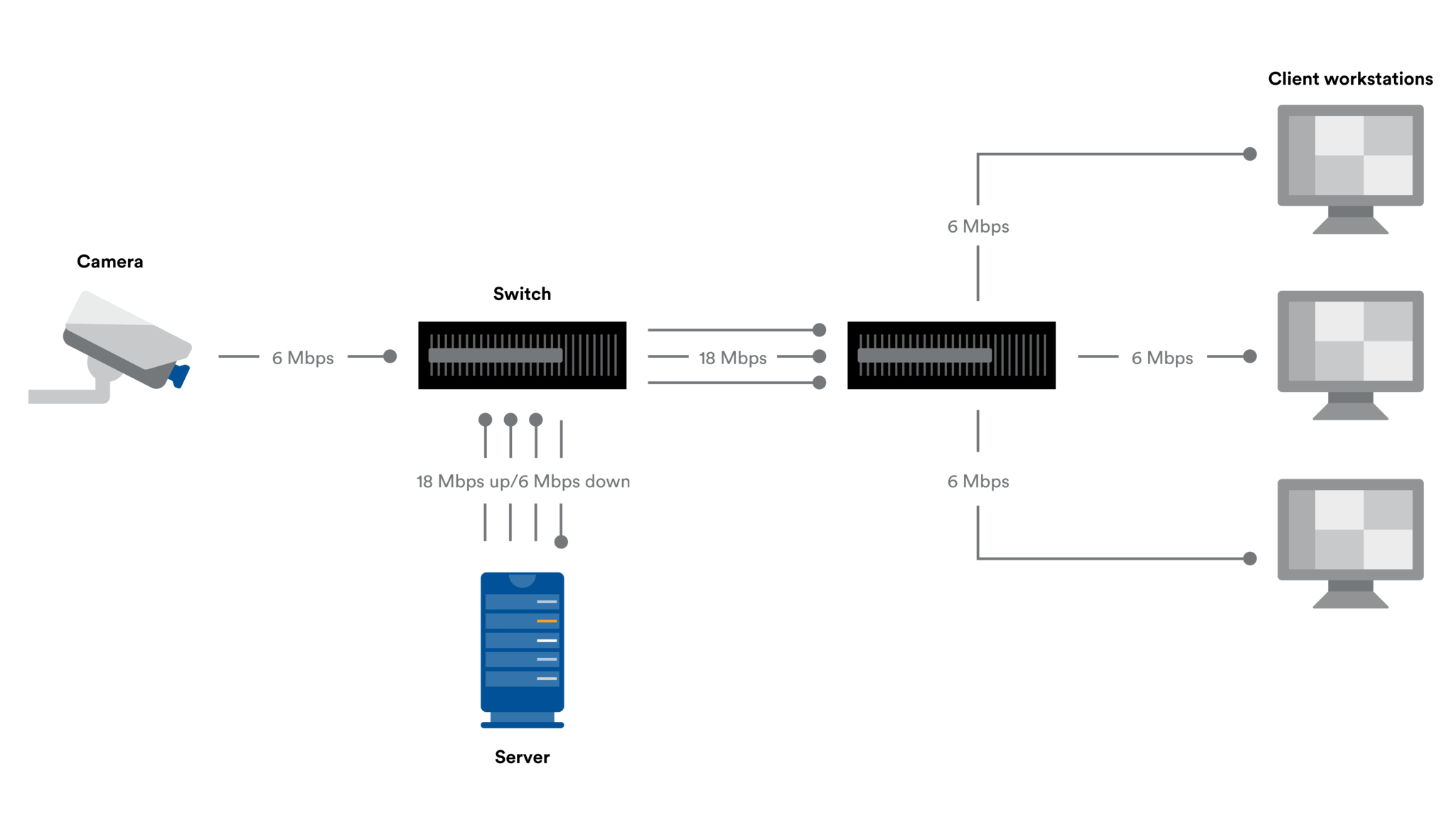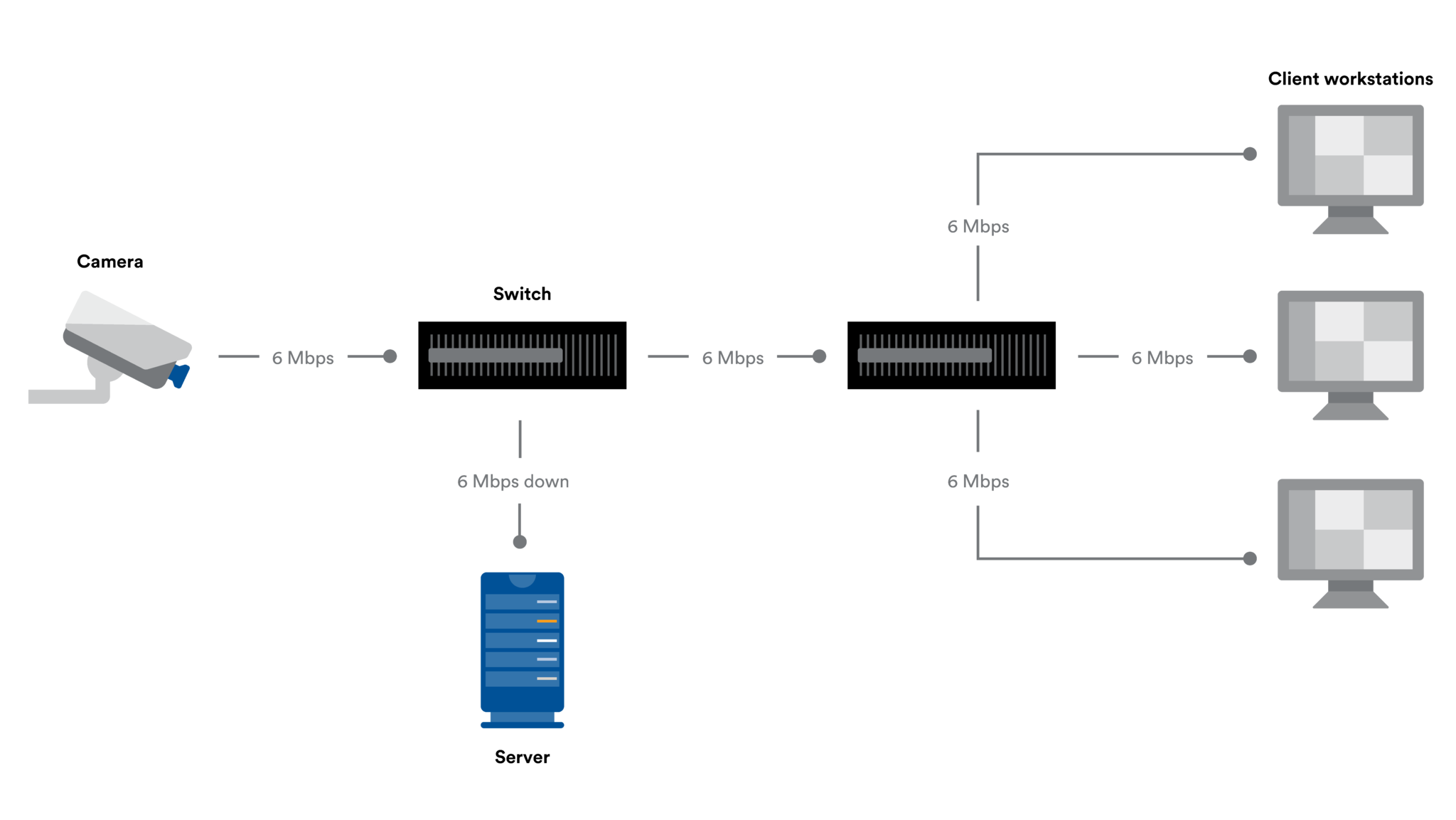Unicast, multicast, or both: what’s right for you?
When it comes to video surveillance applications, there are usually two methods in which video is commonly streamed over a network, from the camera to its destination: unicast or multicast.
When it comes to video surveillance applications, there are usually two methods in which video is commonly streamed over a network, from the camera to its destination: unicast or multicast transmissions. The reality is that each video transmission method comes with its own pros and cons, and every installation’s functional requirements will dictate which transmission is best.
In upgrading or deploying a new video surveillance system, one has to look beyond the supported transmission methods to control bandwidth utilization. There are other key functionalities in the VMS that improve traffic control, maximize bandwidth and help you get the most from your system. But before we get into that, let’s define unicast and multicast.
Unicast transmission
A unicast transmission is defined as a direct one-to-one communication between the camera and the client application. So when three operators request to view video from the same camera, three copies of the same video will be streamed over the network, each relaying to one of the operators.

Multicast transmission
In multicast transmission, there is no direct connection between the source and the destinations. The operator will actually connect to a multicast IP address of the video stream which is shared amongst all users. So the IP camera only sends a single copy of the video stream using its designated multicast IP address and the destination simply connects to the stream available over the network.

Pros and cons
As mentioned, there are pros and cons to each. Unicast typically requires less configuration from a network perspective. Unicast also requires that cameras support concurrent connections; and unicast is much more bandwidth intensive as more data is traveling over the network at once, which can bog down your LAN and interfere with other business systems.
Multicast requires that cameras also support multicast transmission, which is typically the case, and usually involve IT department’s assistance in setting up a multicast-capable network with multicast-enabled routers and switches. With a little more setup effort and time, multicast still has one clear advantage over unicast: it’s a better way to minimize network traffic and optimize bandwidth in installations where multiple users are accessing the same live video source. This is generally the case when there is an incident and all operators need to view the same cameras.
Having a VMS that simply supports unicast and multicast is not enough. Most of the time, more flexibility is needed. Networks are complex and IP video sources do not all transmit identically. Segments of a network do not all necessarily support multicast, and therefore will automatically transmit in unicast. Examples of this include when there are wireless camera connections, a remote location with cameras, or operators accessing video remotely via the internet.
However, an intelligent VMS, like our Security Center unified security platform including our video surveillance system, Omnicast, can handle recording from multicast- and unicast-enabled cameras at the same time, transform the unicast cameras into multicast cameras to ensure efficient bandwidth utilization for local users, and provide a unicast stream to the remote clients, all while using a single server.
This server, acting as a proxy, will also be able to auto-detect the connection type of the camera or the viewing client. This way, if a user sometimes connects from the corporate LAN or remotely from home, the video management server will detect the point of connection, and automatically provide the viewing client with the most optimal type of stream.Ultimately, with the right video surveillance system, multicast goes far beyond being an option for video transmission.
